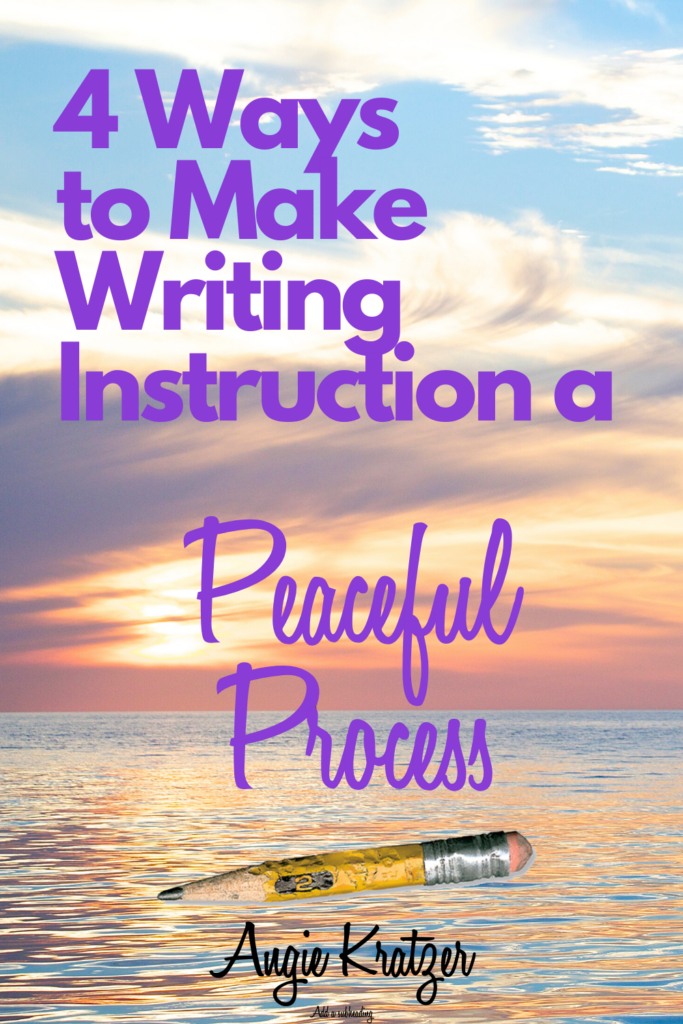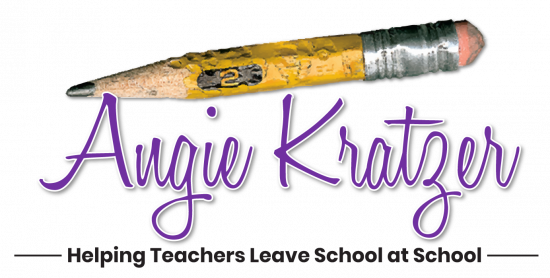
Do student associate comfort and joy with writing? Maybe not. Here are four ways to make writing instruction a more peaceful process.
Deliver instruction in really small chunks.
Teaching involves content, skills, and processes; sometimes, we simply manage students’ intake of information–a thesis has to be debatable, a preposition always has an object, and Poe married his twelve-year-old cousin. Sometimes, we isolate a skill–take those five loose sentences and begin one with a verbal in order to create variety. Most often, we deal with processes–analyze how symbolism contributes to the communication of a theme. Do you know how many different skills are involved in writing an essay like that? Forget that fabulous rubric you designed; it doesn’t even include the myriad little subsets of skills students must have to complete that process.
When my students are beginning to write literary analysis, we approach it through a doorway everyone can enter–concrete details. And boy, do we go through that door a lot. The hinges are worn off before we ever start writing topic sentences. Why? I write the topic sentences for them. They have to get used to defending a idea before they start creating their own. After that–analysis. These sets of topic sentence/concrete detail/analysis–what Jane Schaffer calls “chunks”–get to MASTERY before we ever attempt paragraphs. If you’re faithful with little, you’ll be faithful with much. If a student can rock a three-sentence set, an entire essay will come . . . without tears. If you want to learn how I do my whole process, check out this resource, Literary Analysis for Every Student

Make Your Own Process Transparent
Chances are, the teacher is the best writer in the room. Students need to see and hear the teacher’s thinking process. Turn on a document camera or project a digital document and let students watch you sweat through a paragraph. Does this sound terrifying? It is. It’s even more scary for a fifteen-year-old boy who is convinced he will never be a good writer, that the teacher will judge everything he puts on paper, and that students will do the same. The writing process is HARD. Show me someone who claims writing is easy, and I’ll show you a really poor writer or a liar. Don’t ask a child to pour his guts out–LIVE–onto college-ruled lined paper if you won’t do it too.

Make Most Writing Assignments Low Stakes
When I was in middle school, I was ALWAYS the last kid picked for sports teams. (This was back in the day when shaming was the go-to strategy for adolescents.) My heart would start pounding on the way to PE every day because I knew that embarrassing Angie would be on the agenda. That’s how some of our students feel about coming to English class. Oh goody. I get to spend the next 90 minutes feeling stupid. There are ways to building writing confidence, skills, and even stamina with low-stakes writing assignments.
- Fluency Exercises: Have them write as much as they can as fast as they can about a specific topic for two minutes. Start with softballs like romance and then move on to characters in a novel.
- Bell Ringers: Have students write in paragraph form the response to a question. Use those responses to review material from the day before or activate prior knowledge.
- Summarizers: Have students tell you in paragraph form what they took away from the day’s lesson. Use those paragraphs to inform instruction for the next day.
- Board Writes: This strategy is truly one of my favorite things to do, and I get a lot of bang for my buck. Here’s how it might work: Every student writes a concrete detail, and every student writes his or hers on the board. It can get a little wild up there, by the way. Once all students are done, the teacher makes a sweep of the sentences and circles five that have some serious potential and focuses on making those five examples excellent. The thinking is in real time, students can participate in the revision, and embarrassment potential is lessened by the chaos of it all. Students rarely know who wrote what.
- Response Slips: Students anonymously turn in a few sentences on a slip of paper (cut ahead of time). The teacher skims them, pulls out a few to use as models, and discards the rest.
- Volunteer Editing: Allow students to donate their paragraphs or essays for live revision work. Pop one under a document camera and go to work as a class.
Never Use Writing as Punishment
Want to murder a student’s desire to become a better writer? Make the student write a letter to apologize for something. Want to make a student sick of writing? Treat it like medicine. Assigning analytical writing for homework is a sure-fire way to accomplish that task. If a student is not at mastery, the work does NOT GO HOME.

